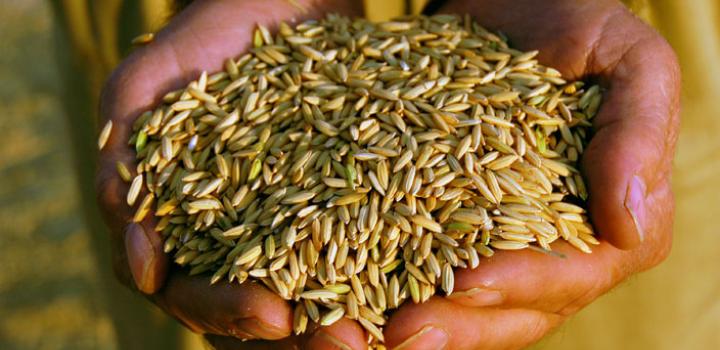Rice production to decline in 2018; Arkansas farmers not likely to see bump from newly opened China market
by July 27, 2017 6:34 pm 507 views

U.S. rice production is expected to decline during the next year, and markets in China will not boost U.S. rice exports in 2018. Overall world-wide rice production is expected to slightly increase, and U.S. rice production is projected to decrease by 14.7%, or 1.04 million tons, United States Department of Agriculture economist Nathan Childs said.
Changes to the North America Free Trade Agreement (NAFTA) could impact U.S. rice prices and production, but as of now, nothing significant is expected, he said.
“I would not look at major changes to the U.S. export market in 2018,” he said.
Arkansas is the leading rice grower in the country, and there had been hopes the newly opened China market might help the rice commodities market which has been in the doldrums. China is the largest rice importer in the world, buying about 5 million tons of rice each year. Other rice producing countries in Asia can sell their rice cheaper than the U.S., so the impacts will be minimal at best. There will be specialty companies and organizations especially along the Chinese coast that will become a niche market for U.S. rice producers, but it will take time to fully develop, he said.
Rice is one of the least traded grains in the world, Childs said. Historically, only about 3.5% of rice produced had been traded up until 2001 when the World Trade Organization opened international commodities markets. About 9% of rice grown is traded in international markets. Countries have strict and varying rice production standards making it more difficult to reach agreements on export/import standards between countries, he said.
Any changes to NAFTA could have an effect. Mexico imports about 900,000 tons of U.S. milled and raw rice each year. After NAFTA was passed in 1994, Mexico started to import a lot of raw rice from the U.S. because it has a high mill capacity, Childs said.
Asian countries don’t export raw or un-milled rice, which makes the two countries ideal trade partners, he said. Haiti, Nicaragua, and other Latin American countries import the bulk of U.S. rice exports.
“The Western Hemisphere is a powerful market for U.S. rice,” he said.
Floods and other weather conditions will cause about 24% in production losses in 2017. In Arkansas, rice producers lost about 100,000 acres, dropping the state’s total acreage to about 1.1 million, University of Arkansas Extention Office, said rice agronomist Dr. Jarrod Hardke. The acreage is a 30% decrease from the previous year. Producers tried to re-plant about 30,000 acres after powerful floods swept through Northeast Arkansas in late April and early May.
The yields for those replanted acres will likely be lower than the norm, he said. Rice farmers had fertilizer issues when planting began, excessive heat during the last two weeks could impact rice quality, he said. Producers could start the harvest as early as next week.
